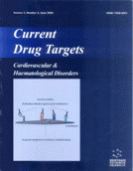Abstract
Advances in biochemistry, protein chemistry and molecular biology over the last twenty-five years have spurred the increased use and development of proteins as injectable therapeutic agents. Introduction of proteins into the circulation exposes them to numerous different cells, enzymes and routes of extravasation that contribute to their clearance and their catabolism. Overly rapid clearance, particularly of small proteins, can limit therapeutic efficacy. Many strategies have been devised to retard the clearance of therapeutic or potentially therapeutic proteins, but relatively few proteins with clearance-retarding modifications are in clinical use. Proteins have been chemically modified towards this end by covalent attachment of polyethylene glycol or dextran chains or by protein-protein cross-linking. Genetic modification has also been employed to fuse proteins of interest to long-lived plasma proteins like albumin or immunoglobulins, or portions of these proteins. While all modifications may reduc e the biological activity of the protein of interest or elicit antibody formation in recipient animals or patients, there now exists sufficient experience in this area that an optimal clearance-extending strategy can often be designed and successfully executed. With the explosive growth of genomic and proteomic information, an exponentially increasing number of engineered proteins are likely to be developed, with a probable need for clearance-related modification.
Keywords: Therapeutic Proteins, CLEARANCE, PEGylation, Dextranation, Succinylation mannosylation, Protein homo-multimerisation, Immunoconjugates, Protein Cross-Linking, Genetic Modification, Immunoglobulin Domains
 22
22













